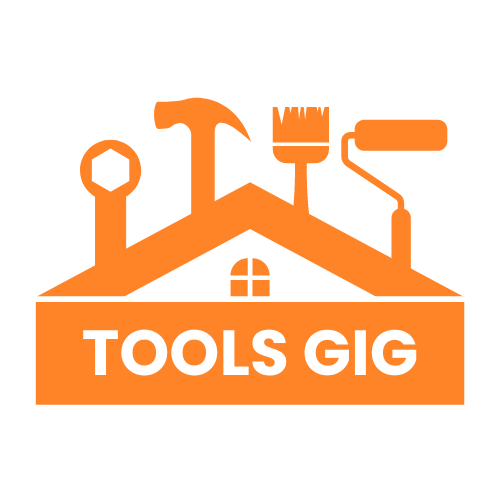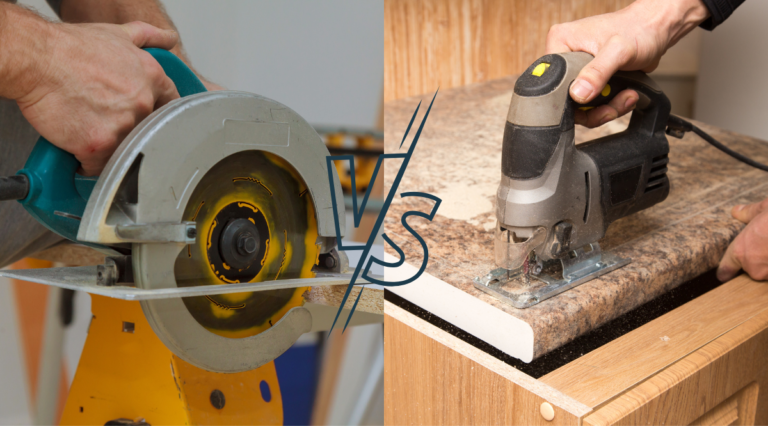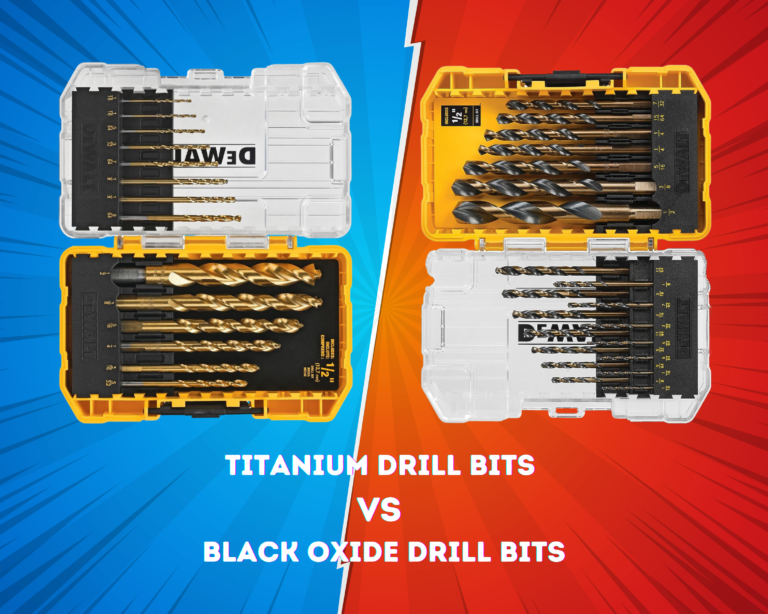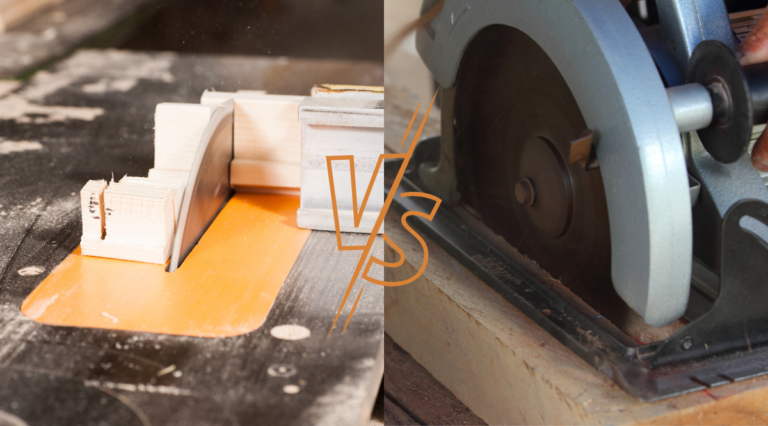Straight claw vs Curved claw hammer – Which One has More Advantages?
As an Amazon Associate I earn from qualifying purchases.
Claw hammers are excellent for DRY projects and carpentry work. A claw hammer can be of two types: Straight claw and Curved claw hammer. They are built to excel at different types of functions.
Whereas the straight-claw hammers are best for driving nails faster and breaking and tearing down heavy structures because of their flat claw, heavyweight, and wide strike face.
In contrast, curved claw hammers are best for pulling nails and have a great finish without affecting the surface of their curve-claw design.
Let’s get a comparison between Straight claw vs Curved claw hammer and explain their benefits and drawbacks so that you can pick one easily according to your project’s needs.
Note: In this article, you can compare ripping hammer vs claw hammer, ripping hammer vs standard hammer, rip hammer vs claw hammer, framing hammer, and curved claw hammer.
Contents
Comparison Table between Straightclaw and Curvedclaw hammer
| Features | Straight claw | Curved claw |
| Claw head | Straight flat claw | Curve claw |
| Strike head | Wider | Wide |
| Strike face | Milled/ Flat | Flat |
| Head weight | Heavy | Light |
| Nail drive | With more power | Less power |
| Nail pull | Less power | With more power |
| Preferred For | Nailing | Pulling nail |
| Price | Affordable | More affordable |
Pros & Cons Compared to Straight vs Curved claw hammer
Straight claw
This type of hammer has a straight claw which weighs more, and the neck is longer to give you more leverage to drive bigger to smaller nails.It has two variants: the “rip hammer” and the “framing hammer.” Rip hammer weight less and short and framing hammer weight more and longer. Straight claw hammers are best for heavy carpentry work.
Curved claw
This claw hammer has a curved claw, and this design let you increase leverage when pulling nails. Though they are slightly short and weightless, it gives a better grip on the nails to pull nails with minimal damage, which named it finishing hammer.
Differences between Straight claw hammer and Curved claw hammer
Claw Design
As you can see, a straight claw hammer claw is straight and flatter, and it may have a deeper or less deep nail slot to easily pull out small to long nails.
However, a curved claw hammer, also known as a trim or finish hammer, gives more strength and power to get into smaller spaces to pull the nails with minimal damage and a great finish.
Head weight
A ripping hammer typically has a heavier head weight, usually between 16 to 32, which allows for more control during demolition and ripping up floorboards.
In contrast, a curved claw hammer has a lighter head weight, a maximum of 24, which allows you to hold it for a longer time with better control.
Nail driving power
Straight claw hammers have more power for driving nails than curved claw hammers. Furthermore, because ripping hammers are heavier and have wider faces, they provide more leverage to drive nails faster and require fewer strikes to drive nails, reducing our effort and shaving time.
Nail puller or nail slot
A claw hammer can pull nails better than a straight claw hammer as it has a curve claw that gives more leverage. Also, by doing this, the claw hammer does not cause much physical damage to the board.
Note: Straight claw hammers do physical damage while pulling, but you can avoid it by putting a thin piece of wood under the hammer.
Hammer strike face
A straight claw hammer face can be of two types; flat and milled. Milled face hammers striker side will have cross-hatch or diagonal lines that ensure a secure grip while striking the nail.
In contrast, the claw hammer only has a flat striker face, which may slip while driving nails.
Note: The flat striker of a straight claw rip hammer will slip like the curved claw hammer.
Nail size
With a straight claw hammer, one can easily drive and pull smaller to longer nails fast but slightly clumsier at nail pulling. Whereas a curved claw handles smaller to larger nails, driving bigger nails needs more strike than the straight hammer, but pulling nails is more easier on it and does great finishing tasks.
Purpose
The purpose of a curved claw hammer is to pull nails in a flash without affecting the surface. Also, this hammer is excellent for trimming and finishing jobs.
On the other hand, a straight claw hammer drive nails fast with less effect. The main thing is that it is best for heavy-duty demolition and construction tasks.
Price
Comparing both the straight claw hammer and curved claw hammer on different brands and platforms, a quality straight claw will cost around $15 to $80. In contrast, a quality curved claw will cost around $20 to $70.
Which One should I choose: Straight claw/ Rip hammer or Curved claw/ Standard hammer
As for my usage, a straight claw hammer would be a superior choice over a curved claw hammer. A claw hammer functions best on nail pulling, for its curve claw gives more leverage to pull nails without affecting the board’s surface.
Whereas a straight hammer does multiple functions, for its weight head and long handle, it gives more leverage while driving nails with great accuracy and effectiveness. Also, its straight flat claw is like a pick, perfect for pulling nails and heavy demolition and construction jobs.
Frequently Asked Questions
Why do electricians prefer the straight claw hammer?
Electricians prefer the straight claw hammer for its great head to handle balance and capability to handle a heavy workload. With the heavy head, flat claw design, and long handle, an electrician can easily drive nails and pull nails with great power and minimal effect.
Also, they get the required fiberglass material and rubber-coated grip handle on a straight claw hammer to have better comfort and safety; that’s why they prefer it.
Does the ripping claw hammer have a straight claw?
Yes, ripping claw hammers have a straight claw. As a straight claw hammer is known as a framing hammer, and a rip hammer, like that a ripping hammer, is a form of the straight claw hammer.
What to do to avoid damage while pulling nails with a straight claw hammer?
Straight claw hammer has a flatter profile along the top for that reason, while pulling nails with pushing pressure can damage the surface you work on.
To avoid this, just put a thin piece of wood underneath the hammer so that the pressure will feel on the thin piece of wood and damage it but won’t damage the surface you were working and you can easily pull nails.
What is the best weight for a claw hammer?
Generally, the best weight for a straight and curved claw hammer is 16 ounces. This weight is considered best because it won’t feel much heavy while working, and for common usage, one can easily drive a nail and pull it out.
Conclusion
A curved hammer can be considered for light home works, but a straight claw hammer is the best choice for heavy home, demolition, and construction works. I hope I have discussed every possible perspective and hope that you have understood all those to have the perfect hammer for your job. Thank you.





